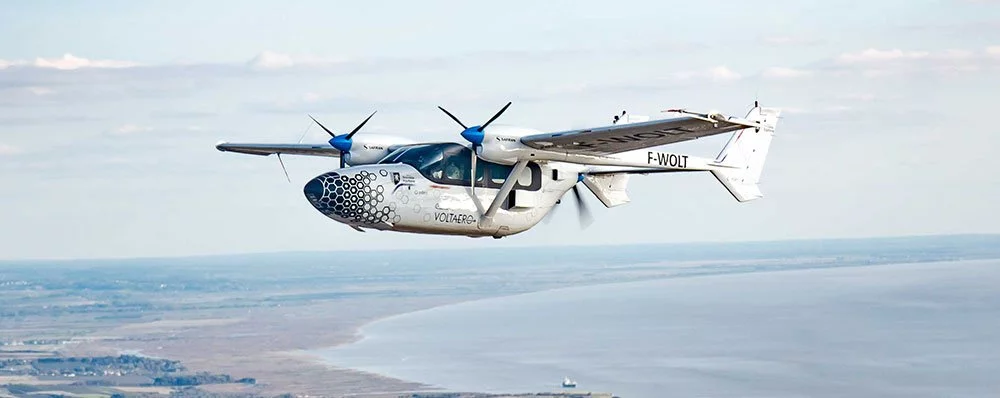KinectAir says it'll be running VoltAero's pretty Cassio aircraft as part of its regional fleet by 2023, allowing it to offer all-electric short-range and hybrid-electric longer-range hops at seat prices around 70 percent of current conventional aircraft.
We still haven't seen the Cassio's final form break out of renders and into real life as yet – we won't even see a scale model until mid-June at the France Air Expo – but VoltAero has been undertaking plenty of test flights to validate its multi-mode hybrid-electric propulsion system, retrofitted into a different airplane called the Cassio-1, since last October. The Cassio-1's cockpit also had to be gutted and rebuilt as well; there are no existing planes designed for hybrid operations.
The powertrain incorporates multiple electric motors and a combustion engine, arrayed such that power can be supplied directly to the prop in full-electric, full-combustion or hybrid modes. Power is only applied directly to the prop shaft by the engine when full combined power is needed or there's something wrong with the electrics; most of the time, the combustion engines function as range extenders, topping up the batteries at their most efficient RPMs.

In the production Cassio, this system will drive a pusher prop at the back of a heavily tapered cabin. There's a wide, rear-mounted main wing, a shorter canard wing at the front, and twin tails stretching back off the main wing, joined by a final upper wing at the rear. The multi-mode powertrain adds an extra degree of redundancy for safety, allowing the plane to safely land with either system switched off. It doesn't need a huge runway either, taking off relatively quietly on full electric power in less than 1,800 ft (550 m).
VoltAero says it's developing four, six and 10-seat versions of the Cassio, making 450, 650 and 800 horsepower, respectively. With a cruise speed around 360 km/h (225 mph), the Cassio will offer an all-electric range around 200 km (120 miles), a range-extended mild hybrid range between 200-600 km (120-370 miles), and a heavy hybrid range up to 1,200 km (745 miles). Emissions will be zero in full-electric mode, and VoltAero says the Cassio will be "20 percent lower emissions than competitors in full hybrid mode" as well.
Even though it's running a combustion engine and hybrid powertrain, which would appear to make it more complex than a standard aircraft, VoltAero says the total cost of ownership should still be around 35 percent lower than "competition," and as a result, Kinect CEO Jonathan Evans has told Corporate Jet Investor the Cassio's cost per seat mile will be about "70 cents on the dollar." That's running mainly heavy hybrid missions; full-electric flights bring that cost closer to half the cost of a conventional plane.

KinectAir, for its part, is building an Uber-style app with which to manage the customer experience, the fleet of aircraft and detailed instructions for the pilots. It'll run across smartphones, computers and screens in the aircraft's cockpit with the aim of making the entire service run as efficiently as possible. Customers will be able to request the Cassio specifically, or tick another box to request electric or hybrid aircraft.
VoltAero expects to be testing a full-size production prototype next year, with the type certification process already underway. It expects to be moving to serial production by the start of 2023, and for the Cassio to be fully certified by the end of 2023.
Source: KinectAir via Urban Air Mobility News





